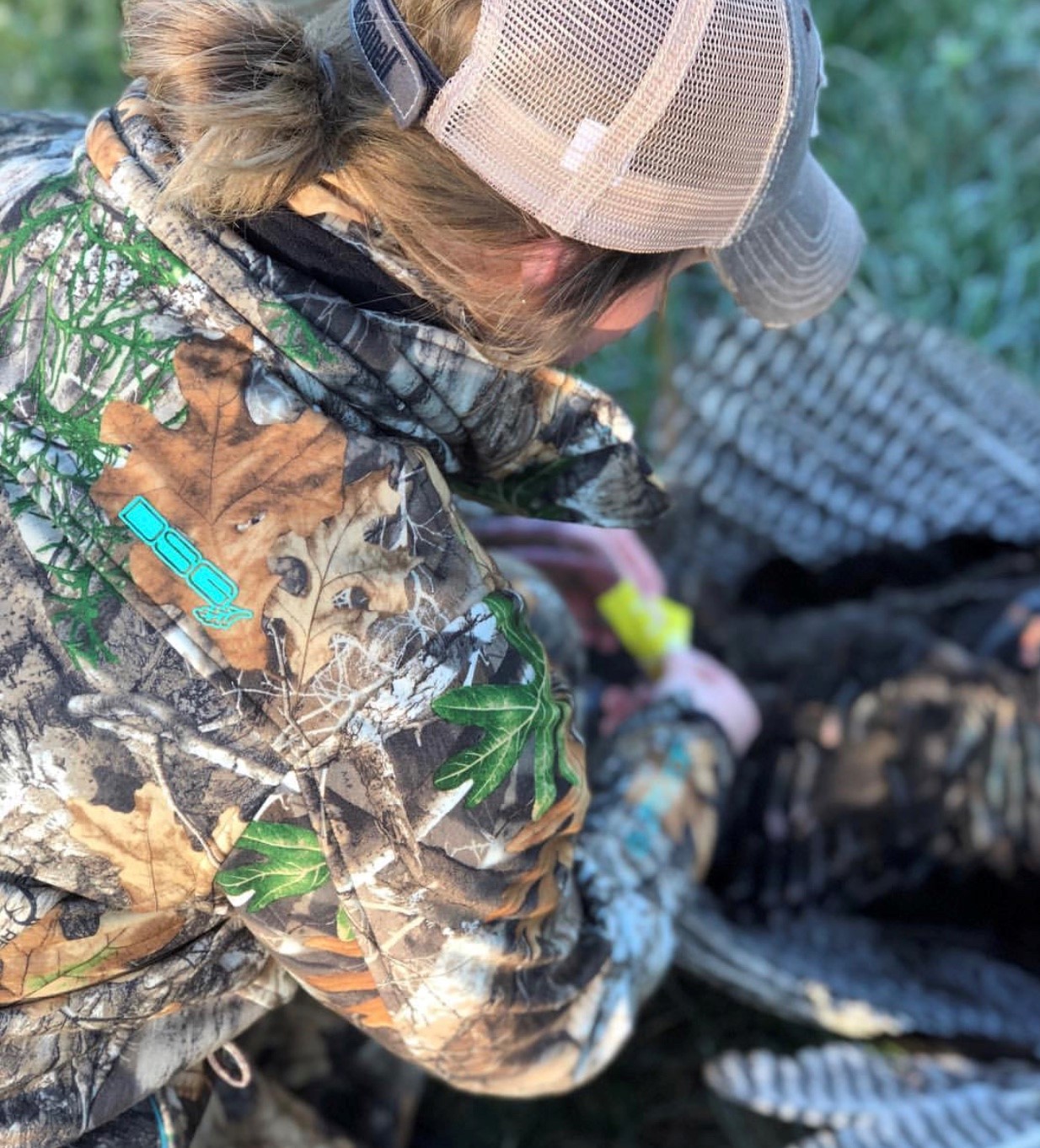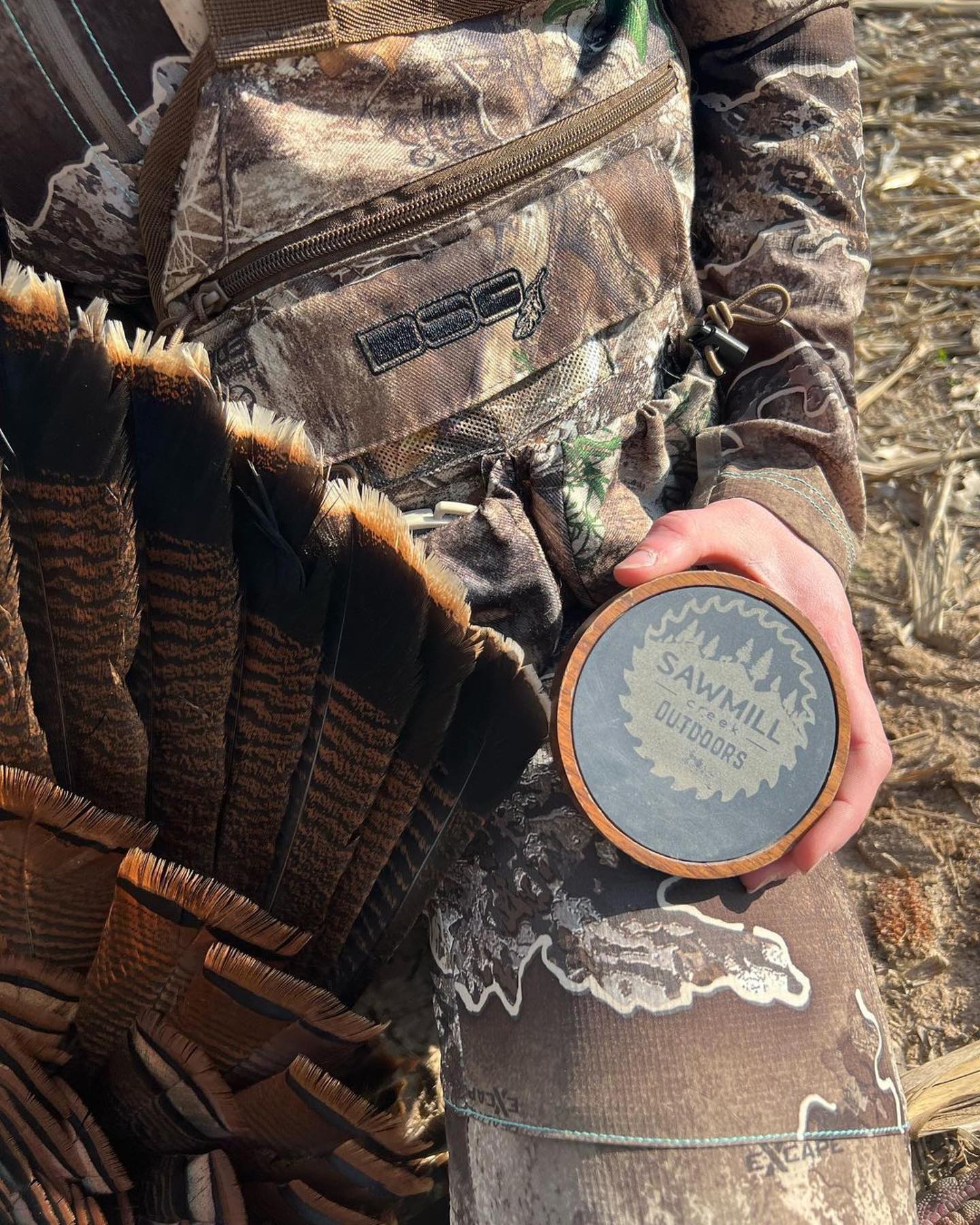Talk Turkey: Turkey Calling Tips
Posted by Samantha Simma on Mar 28th 2019
Who’s ready for spring turkey hunting? The Toms are about to get fired up and territorial for breeding season. When it comes to turkey hunting, stealth and persistence prevails, but an integral component of this type of hunting is calling. With all the turkey calls for hunting, it can be daunting to make your selection and then become an expert at mimicking the appropriate sounds. Simplify this process with a few easy principals!

Key components of turkey calls for hunting
Practice: a call is like an instrument. You wouldn’t pick up a guitar to play a live set without every strumming the chords. Practice helps to eliminate mistakes out in the field (or woods).
Patience: every bird is different. There are those that will swear by calling every 10-15 minutes, but sometimes it’s best to know when to stop. If a gobbler is closing in, put down your calls and wait. The gobbler will get curious about a hen that’s gone quiet. Turkeys do communicate often, but sometimes less is more and over calling can be a hindrance on success.
Positioning: turkeys will go in any direction to reach other turkeys, and this includes going up or down a hill. Many avoid calling a turkey downhill. Yes, calling a turkey that’s uphill from you may give the turkey the perfect vantage point to reveal your presence, but we all know that not every hunting scenario is ideal.
Variation: turkeys get wise to the sound of your call, but variation in inflection and tone can counteract the call-shy turkey. Carrying a variety of calls or different strikers for your pot call contribute to your ability to mix up your calls. In addition, using multiple calls can help you sound like multiple turkeys.
Volume: you may need to be loud to overcome noisy wind or distance, but otherwise, soften up. You’re luring in a turkey, your calls should be enticing. Soft yelps, clucks and purrs reel in those final steps.
Tone: hens produce a variety of sounds, including yelps, clucks, purrs, etc. This wide range should not daunt you, but encourage you. Like people, hens have different voices, and you can use that to your advantage. Predominantly, the yelp of a hen is a raspy, three-note yelp, as opposed to the slower, deeper and coarser yelp of a gobbler. Sometimes, it’s good to mix in a gobbler yelp, as these birds are talking in the woods too.

Common types of calls
Locator calls: these calls mimic loud, natural noises in search of a gobble from a distant Tom. By locating a Tom, you can determine his roost or narrow down a section of timber or field. Instead of simulating other turkeys, these calls will produce the sounds of owls, hawks, woodpeckers, crows and more.
Push-button calls: these calls are a great way for beginners to make simple, lifelike hen noises. Inside the call, a spring-loaded plunger strikes a piece of wood inside a small box. By varying the speed and pressure of the plunger, the hen sounds can easily be mimicked and varied. This call is not ideal for raspy or smooth tones, but the single hand operation is convenient and efficient. If you’re getting the kids involved, operating the push-button call is an easy and rewarding task for them.
Box calls: these calls make hen yelps and clucks easy to learn because they’re easy to operate and make realistic noises while still easily manipulating tone and volume. If necessary, these calls can be operated very loudly to locate distant gobblers or cut through wind. The downsides of these calls include the amount of movement required for operation and many believe that gobblers have wised up to these calls because they tend to sound very similar.
Diaphragm or mouth calls: these small, easy to carry calls are for all the turkey calling purists out there. A plastic frame surrounds a pliable reed or diaphragm, and forcing air over the reed with your mouth mimics many hen vocalizations. These calls are considered to be the most realistic, with the capability to vary your output by modifying your air pressure and tongue placement. As hard as they are to master and learn, the pay-off is a wide range of realistic turkey simulations with little to no required movement.
Pot calls: these versatile calls produce the greatest range of sounds with the smallest learning curve. In this instance, a shallow, circular pot holds a round slate, glass or aluminum disk. Using a striker, the caller rubs or scratches the disk to produce various hen noises. Varying the pressure and pattern of the striker adjusts the noise. It’s easy to make adjustments based on how the gobbler is responding—from loud, raspy long-range tones to quiet, subtle purrs. These turkey calls for hunting do require some movement, and you’ll have to put down the call in exchange for your gun when the gobbler starts closing in.
Gear up for all your turkey hunting expeditions with DSG Outerwear. Head over to the DSG Instagram page for the chance to win some free gear from our ambassadors.


